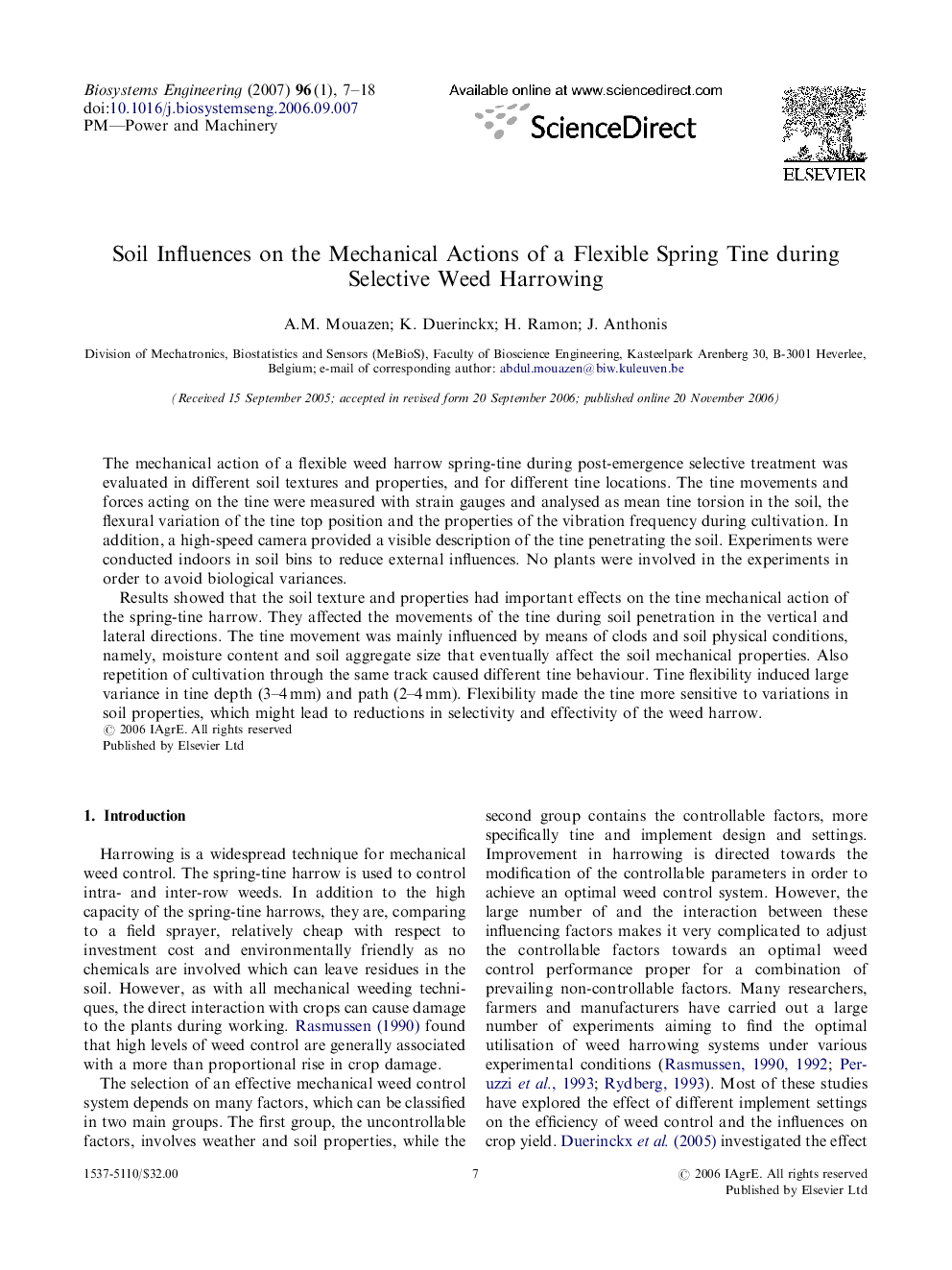| Article ID | Journal | Published Year | Pages | File Type |
|---|---|---|---|---|
| 1712759 | Biosystems Engineering | 2007 | 12 Pages |
The mechanical action of a flexible weed harrow spring-tine during post-emergence selective treatment was evaluated in different soil textures and properties, and for different tine locations. The tine movements and forces acting on the tine were measured with strain gauges and analysed as mean tine torsion in the soil, the flexural variation of the tine top position and the properties of the vibration frequency during cultivation. In addition, a high-speed camera provided a visible description of the tine penetrating the soil. Experiments were conducted indoors in soil bins to reduce external influences. No plants were involved in the experiments in order to avoid biological variances.Results showed that the soil texture and properties had important effects on the tine mechanical action of the spring-tine harrow. They affected the movements of the tine during soil penetration in the vertical and lateral directions. The tine movement was mainly influenced by means of clods and soil physical conditions, namely, moisture content and soil aggregate size that eventually affect the soil mechanical properties. Also repetition of cultivation through the same track caused different tine behaviour. Tine flexibility induced large variance in tine depth (3–4 mm) and path (2–4 mm). Flexibility made the tine more sensitive to variations in soil properties, which might lead to reductions in selectivity and effectivity of the weed harrow.
